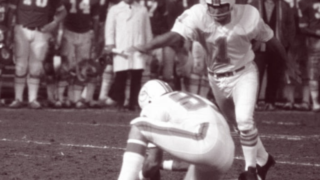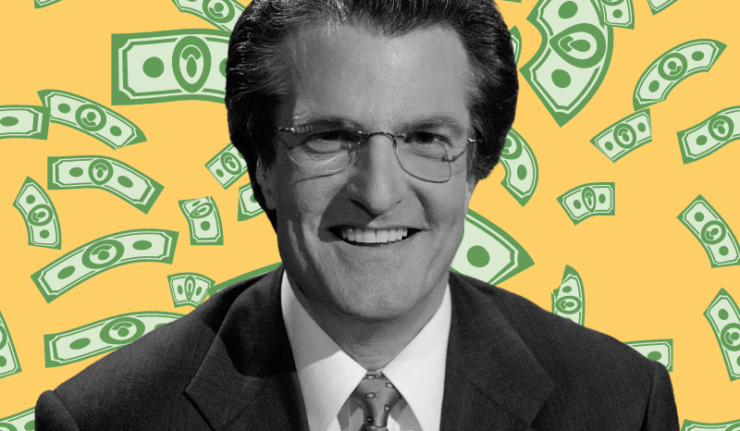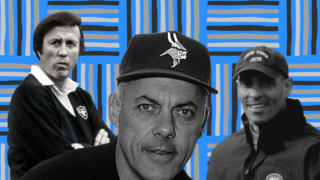People love to hate on Mel Kiper Jr., the helmet-haired, squinty-eyed loudmouth who pops up once a year like the Groundhog seeking his shadow to serve his role as a NFL Draft guru.
But whereas Kiper’s acumen as a player prognosticator is suspect: he’s still a brilliant man who was years ahead of his time.
How Mel Kiper Became a Draft Guru
In the late 1970s, coverage of the NFL Draft was essentially non-existent. A few people talked about it before draft day, but ESPN didn’t even exist yet. Still, Mel Kiper Jr. had a dream.
When he was only 18 years old in 1978, Kiper was making appearances on radio shows to talk about college players and draft selections ahead of the draft. Most radio programs thought he was in his 30s or 40s. He was booked because he had the audacity to place ads in sports publications touting his draft prediction pamphlets. In a way, he was like Bill James, the rogue baseball stat-head from Kansas who hand mailed his baseball writing in the 1970s ahead of a career that changed sports analysis.
James was passionate about high-level statistical analysis of baseball. Kiper believed the NFL Draft could one day be an event that rivaled the Super Bowl for coverage.
“I had a vision of what [the NFL draft] could be. Everybody told me I was nuts to have that vision.”
But by the 1980s, Kiper was on ESPN as a “draft expert.” His path was paved by advice from Ernie Accorsi, a top executive with his hometown Colts. Mel delivered draft analysis and player scouting reports to Accorsi every year, and Accorsi told him to pursue a consulting career because he thought the draft would be much more important in coming years.
Accorsi was right, and so was Kiper, who doggedly chased his dream.
That’s the genius of Kiper: his marketing and branding acumen. Years before the World Wide Web, and even before cable sports programming, Kiper understood that a personal brand could build a career. BY the late 1980s, he was a central figure in ESPN’s coverage of the NFL Draft.
In a 1989 ad for his draft preview books in The Sporting News, a testimonial states that Kiper’s memory is “computer-like.”
At the 1994 NFL Draft, during ESPN”s coverage of the event, controversy, as they say, “erupted” when Kiper soundly criticized the Colts strategy. Indianapolis had two picks in the top five of the first round, and according to Kiper, they needed a quarterback. Instead, the team picked Marshall Faulk at #2 and linebacker Trev Alberts with the fifth selection.
“I think it was a typical Colts move,” Kiper said live on the ESPN telecast. “The Colts needed a quarterback. To pass up a Trent Dilfer when all you have is Jim Harbaugh: give me a break. That’s why the Colts are picking second every year in the draft and not battling for the Super Bowl like other clubs in the National Football League.”
Asked about Kiper’s strong criticism, Indianapolis Colts general manager Bill Tobin uttered the famous phrase, “Who in the hell is Mel Kiper anyway?
“Mel Kiper has no more credentials to do what he’s doing than my neighbor, and my neighbor’s a postman, and he doesn’t even have season tickets to the NFL.”
It was great television, and certainly served Kiper well. You can’t purchase that type of publicity. And it wasn’t the only time Mel got under the skin of NFL executives.
Mike Hickey, the Jets director of player personnel, in 1988, responded to criticism from Kiper about his draft selections: “That’s why [he’s] working in his basement in Baltimore. When he gets a job in the NFL, then we’ll go head-to-head. I’m sure they’re knocking down doors in Baltimore. The guy knows about as much about football as I know about nuclear physics.”
To be fair to Kiper: he was correct about the Colts fifth pick in the 1994 Draft. Alberts recorded a grand total of three sacks before retiring after three seasons in the NFL. Quarterback Dilfer was a Pro Bowler for Tampa Bay in 1997, played 14 seasons in the NFL, and in 2000 he led the Ravens to a Super Bowl title. Tobin was fired after the Colts went 3-13 in 1997.
Still, people inside the NFL never have warmed to Mel. One said of him: “He’s a frustrated personnel director, only he’s never had that job.”
What Makes Mel Kiper Smart
Telling viewers who should be picked where in the NFL Draft is not the special gift that god gave Mel Kuiper. No, his genius lies in marketing.
Mel Kiper Jr. is the Tony Robbins of the NFL. It doesn’t really matter what the substance of his content is, it’s about the packaging.
Today, more than 40 years after he put together first draft reports, and nearly four decades after his first appearance on ESPN, the NFL Draft just isn’t the NFL Draft without his huge helmet-hair, thick-rimmed glasses, and bold advice on who should be taken and by whom.
Kiper has made himself into a set piece of the second biggest event in the richest and most popular sport in North America. He has a studio in his home in Maryland, where he can make appearances, cementing his status as an NFL draft icon. For many fans, Mel Kiper Jr.’s name is as synonymous with football as the name of their quarterback.
Mel Kiper doesn’t mind the criticism. Like any successful person, he recognizes that if they aren’t talking about you, then you’re doing something wrong.



